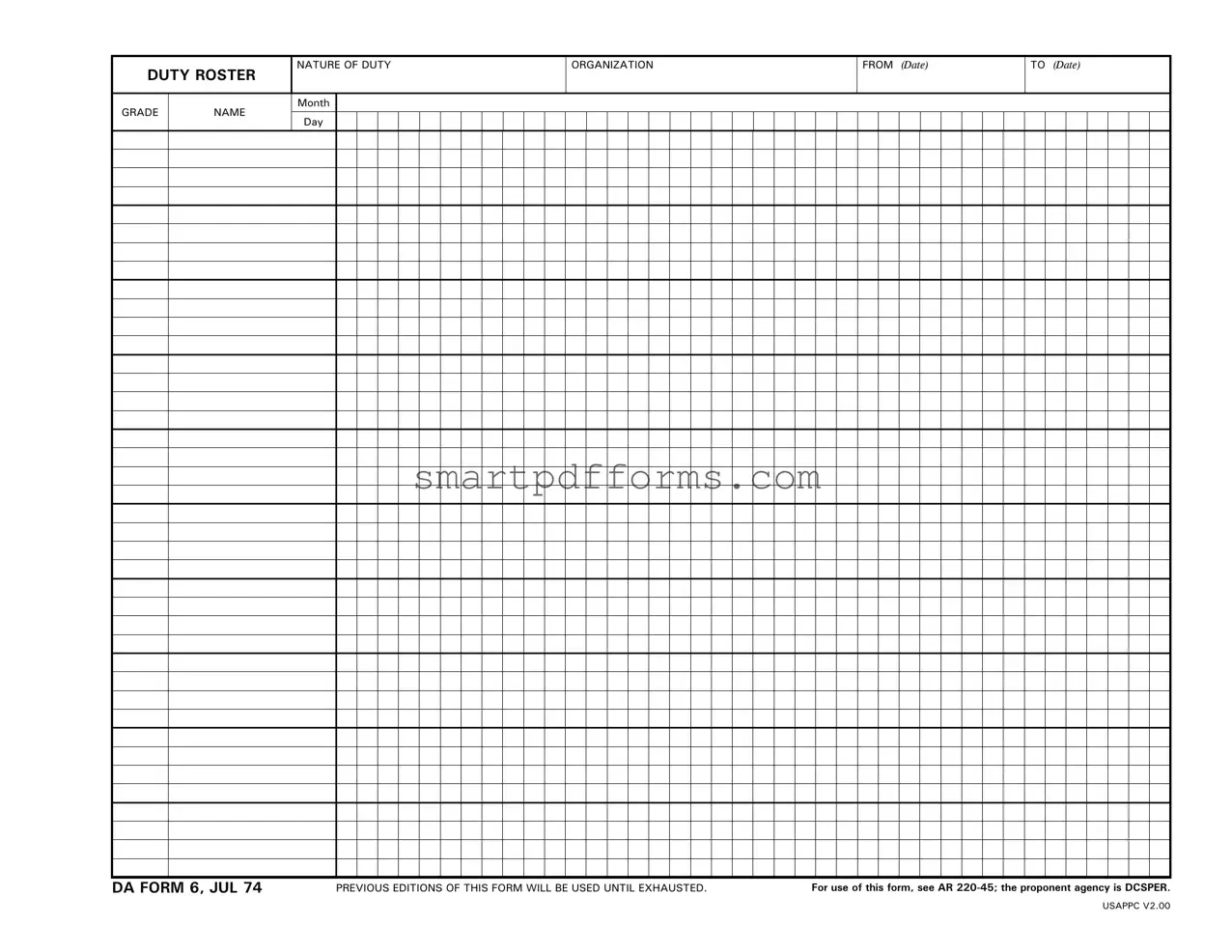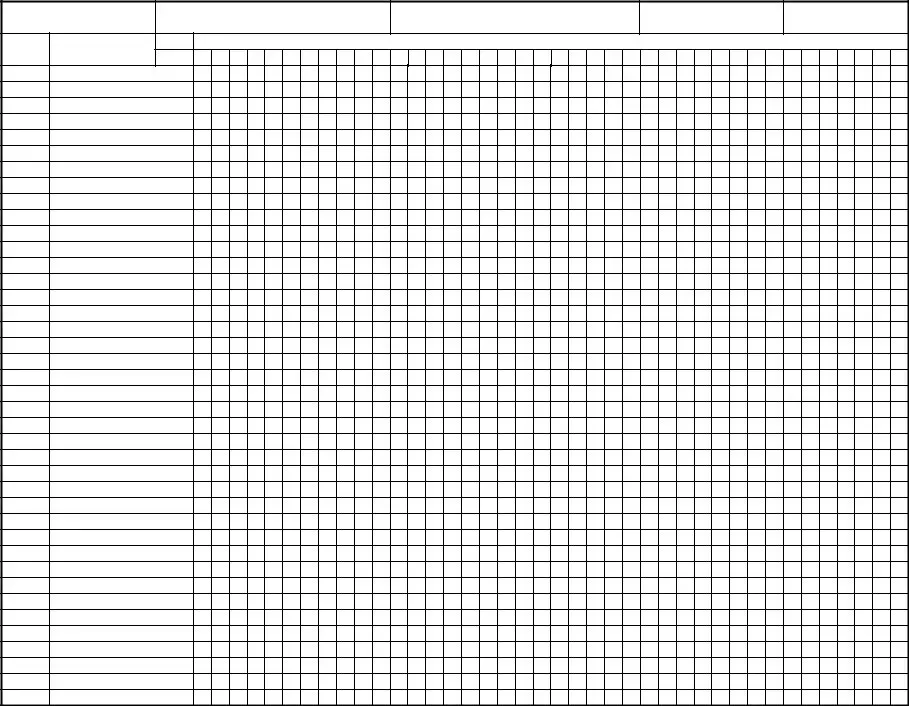In the meticulous world of military documentation and personnel management, the Da 6 form stands as a quintessential tool, bridging the meticulous scheduling needs with the rigor of military discipline. Rooted in the specifications outlined by AR 220-45 and curated by the proponent agency DCSPER, this form serves a crucial purpose in maintaining and managing duty rosters. Spanning across various components, it meticulously records details encompassing the nature of duty, organization affiliations, and chronological duty assignments from start to end dates. The Da 6 form operates under a specific mandate, denoted in its design as of July 1974, with a directive to continue using previous editions until exhaustion. The strategic importance of this document echoes through its simple yet vital role in ensuring a structured and transparent approach to personnel duty assignments, highlighted by categorizations such as grade and name, aligned against the duty roster for each month. This form, therefore, is not just a piece of paper but a pivotal fixture in the planning and execution of military operations, ensuring that roles are clearly defined and systematically organized for the smooth functioning of the military apparatus.

